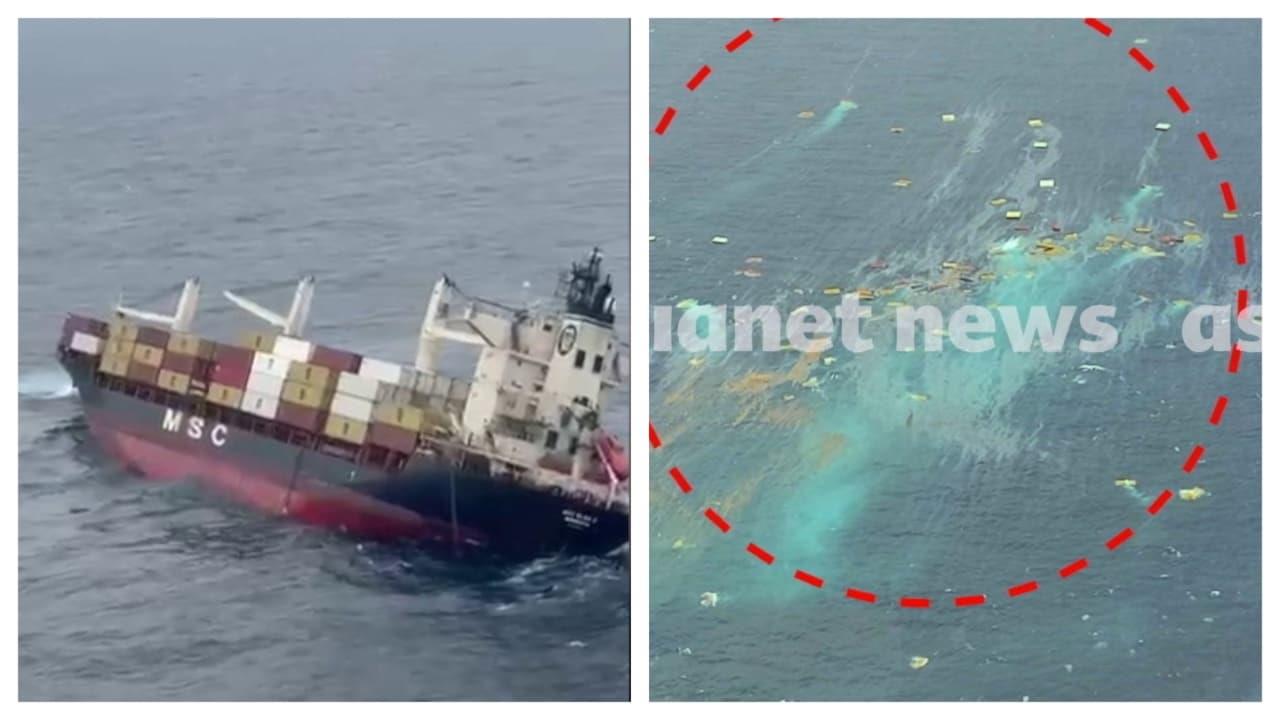
Oil Spill From MSC Elsa 3 Shipwreck Linked To Marine Wildlife Death Off Kerala Coast
Kochi: A dead marine turtle showing physical deformities has been found at the wreckage site of container vessel MSC Elsa 3, suggesting that the shipwreck's oil spill and associated contamination have begun to cause direct harm to marine wildlife. The discovery from the CSIR-National Institute of Oceanography indicates toxic exposure and ecosystem stress linked to pollutants from the sunken vessel, marking the first documented evidence of ecological casualties from the May incident off Kerala's coast. The survey, conducted between late July and mid-August aboard research vessel Sagar Sampada, revealed that oil pollution from the sunken vessel is moving towards the shore and may threaten fishing communities and coastal ecosystems.
Researchers documented extensive oil film on the water surface being carried shoreward by wave action. More alarmingly, they detected powerful upwelling along India's southwest coast, with traces of high-salinity Arabian Sea water in the region. This combination is particularly dangerous because upwelling normally brings nutrient-rich deep water to the surface, supporting Kerala's fisheries. But when contaminated water gets pulled up through this process, pollutants can spread rapidly through the marine food chain, potentially affecting fish stocks that coastal communities depend on for their livelihoods.
Ecosystem Disruption
Water quality measurements at Kozhikode, Munambam, Kochi, Alappuzha, and Colachel revealed significantly depleted oxygen levels compared to offshore areas. Marine life already struggling to survive in low-oxygen conditions now faces additional stress from oil contamination, creating what scientists call a "double whammy" effect that could lead to more casualties like the deformed turtle discovered at the wreck site.
The preliminary report documented abundant gelatinous plankton from Kollam northward, with population explosions at various depths (10m to 50m) off Kochi, Alappuzha, and Kollam. Between Kollam and Kozhikode, researchers identified bioluminescent Noctiluca blooms, with a particularly dense concentration causing visible water discoloration at 20 meters depth off Arthunkal. These massive plankton blooms often indicate ecological imbalance triggered by pollution or changing water conditions. While they create spectacular bioluminescent displays at night, they can harm fish populations and disrupt the marine ecosystem.
The state government has sanctioned Rs 10 crore for the Kerala State Pollution Control Board to engage CSIR-NIO for a comprehensive long-term assessment of the environmental damage. Beyond documenting ecological harm, the agency will develop restoration strategies and review existing maritime regulations, emergency protocols, and liability frameworks, essential work given that Kerala's coast faces increasing shipping traffic and climate-related challenges. The final report is expected by July 30, 2026, according to documents submitted to the National Green Tribunal's Principal Bench.
Legal Repercussions
The NGT bench, comprising Chairperson Prakash Shrivastava and Expert Member A. Senthil Vel, has ruled that the incident violated the Biodiversity Act, 2002, the Water (Prevention and Control of Pollution) Act, 1974, and the Environment Protection Act, 1986. The tribunal took suo motu cognisance after a report published in The Hindu regarding INCOIS predictions warned that containers from the sunken ship could drift toward Alappuzha and Kollam coasts within 48 hours-a forecast that underscored the immediate threat to coastal communities. The survey findings suggest the MSC Elsa 3 disaster isn't just causing localized damage at the wreck site, but triggering cascading ecological effects along a significant stretch of Kerala's coastline, with implications for both marine wildlife and the fishing communities who depend on these waters.
Legal Disclaimer:
MENAFN provides the
information “as is” without warranty of any kind. We do not accept
any responsibility or liability for the accuracy, content, images,
videos, licenses, completeness, legality, or reliability of the information
contained in this article. If you have any complaints or copyright
issues related to this article, kindly contact the provider above.


















Comments
No comment